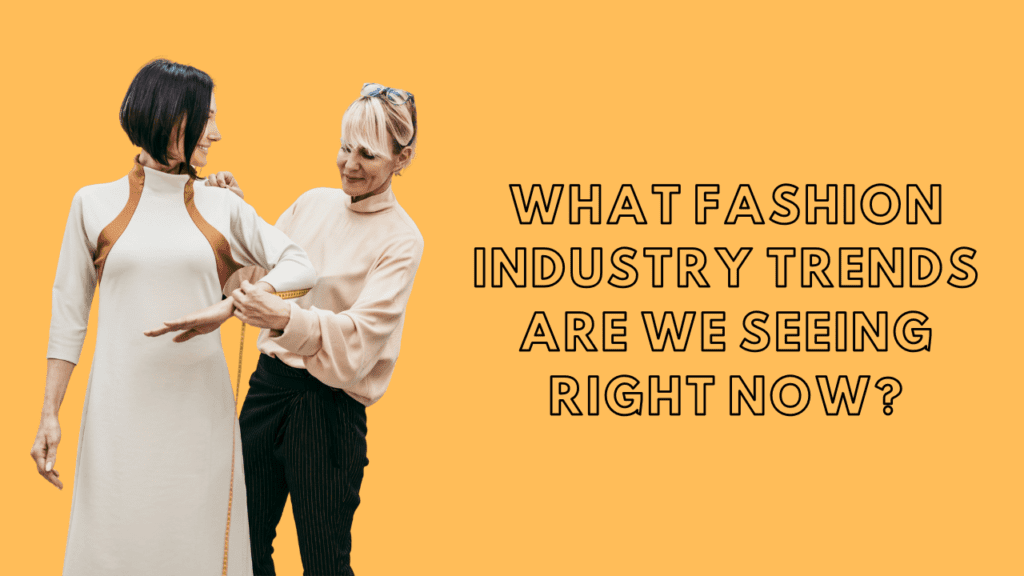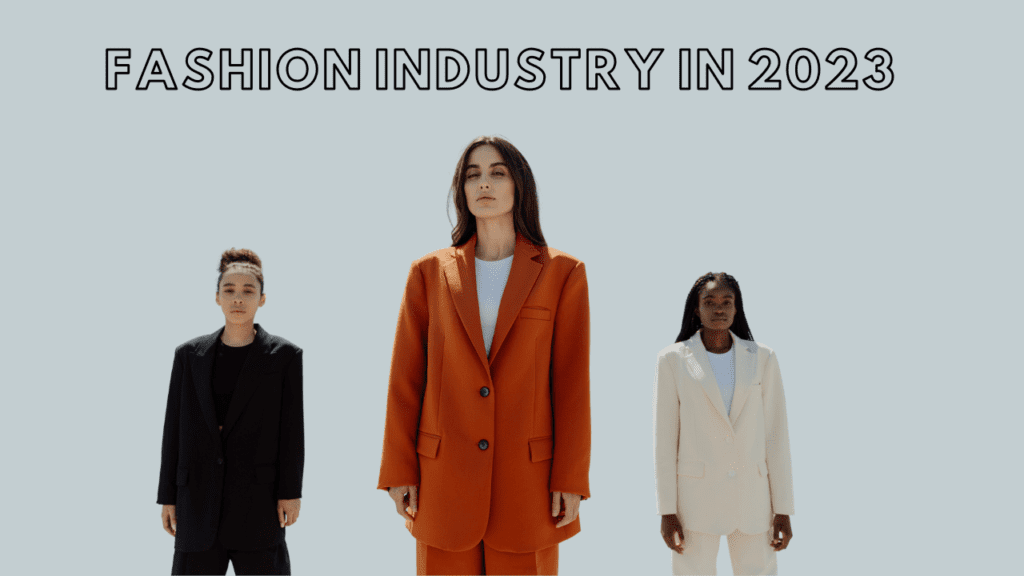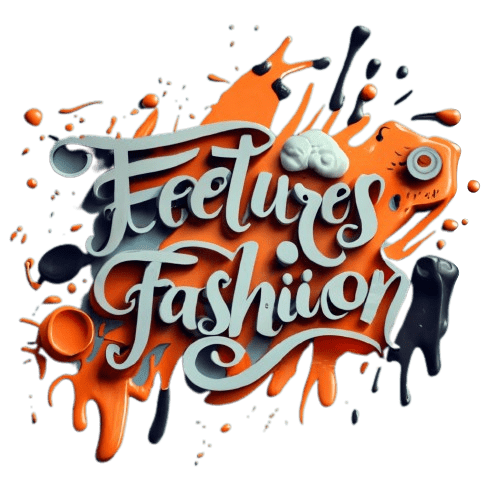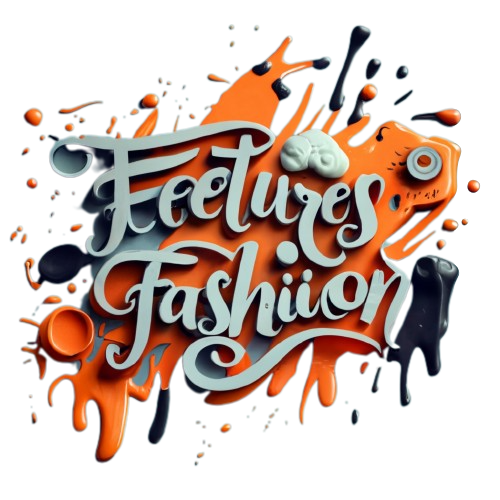Introduction Fashion Industry
Fashion Industry is a dynamic realm, constantly evolving and adapting to changing consumer preferences, technological advancements, and global events. In this article, we’ll explore the current trends shaping the fashion world in 2023. From sustainable fashion and technological innovations to inclusivity and the impact of the pandemic, we’ll delve into the hottest topics that are influencing the way we dress and express ourselves.

Table of Contents
The Resurgence of Sustainable Fashion
Sustainable Textiles and Materials
The fashion industry now revolves around sustainability as a fundamental concern. Many fashion brands are now prioritizing eco-friendly fabrics and materials. Recycled fabrics, hemp, and organic cotton are becoming more and more fashionable. Consumers are increasingly seeking products that are not only stylish but also environmentally responsible.
Thrifting and Second-Hand Shopping
Thrifting and second-hand shopping have witnessed a resurgence. Vintage and pre-owned clothing are being embraced by fashion-conscious individuals. This trend not only reduces the environmental impact of the industry but also adds a unique flair to personal style.
The Influence of Technology on Fashion
Virtual Try-Ons and Augmented Reality
Technology has transformed the way we shop for clothes. Virtual try-ons and augmented reality applications allow customers to visualize how garments will look on them without trying them on physically. This technology has improved the online shopping experience and reduced return rates.
Blockchain in the Fashion Supply Chain
Blockchain technology is being utilized to increase transparency in the fashion supply chain. It helps in verifying the authenticity of products, tracking the origin of materials, and ensuring ethical production practices. This is a significant step towards eliminating counterfeit products and unethical working conditions.
Inclusivity and Diversity
Expanding Representation on the Runway
The fashion industry is doing a great job of advancing inclusivity and diversity. Runways now feature models of different ethnic backgrounds, body types, and abilities. This shift towards inclusivity is reshaping the industry’s beauty standards and promoting a more accepting and representative fashion world.
Adaptive and Gender-Neutral Fashion
Fashion is breaking free from traditional gender norms. Brands are increasingly offering gender-neutral clothing, and adaptive fashion for people with disabilities is on the rise. This reflects the growing recognition that fashion should be accessible and comfortable for everyone.
The Impact of the Pandemic on Fashion
Rise of Athleisure and Loungewear
The pandemic accelerated the trend of athleisure and loungewear. With remote work and lifestyle changes, comfort and versatility have become key priorities for consumers. Sweatpants, yoga pants, and cozy loungewear are now staples in many wardrobes.
The Shift to Digital Fashion Weeks
Fashion weeks have gone digital. With restrictions on gatherings, the fashion world has adapted by hosting runway shows and events online. Digital fashion weeks have made the industry more accessible to a global audience.

Fashion Industry Trends 2023
The fashion business, which is renowned for its ongoing change, is about to adopt a number of fascinating trends in 2023. In this article, we’ll examine the key trends that will shape the year as fashion enthusiasts around the globe anxiously await the next big thing. Let’s explore the interesting world of fashion, from sustainability and technology to new notions of beauty and the comeback of historical designs.
Sustainability Takes Center Stage
Eco-Friendly Fabrics and Materials
By 2023, sustainability will have become a basic idea rather than just a trendy term. Sustainable textiles such as hemp, Tencel, and organic cotton will become more popular. Furthermore, products that have been recycled or upcycled will be given preference, demonstrating the industry’s dedication to lessening its environmental impact.
Revolving Fashion
One important idea will be circular fashion. Manufacturers will concentrate on producing goods that are not just fashionable but also robust, recyclable, and repairable. Reducing waste and increasing the life of garments are the objectives.
Diversity & Inclusion Increasing Participation
Diversity is being welcomed by fashion. Models with a variety of skills, body types, and ethnicities will be seen on runways and in advertisements. This change in representation is encouraging diversity, altering beauty standards, and cultivating a more welcoming fashion industry.
Gender-neutral and Flexible Style
Gender conventions are under attack. Gender-neutral clothing lines are becoming more popular among brands, and adapted fashion—clothes made for people with disabilities—is becoming more well-known. A broader spectrum of consumers can now access and enjoy the benefits of fashion.
Conclusion
The current trends in the fashion industry reflect the industry’s ability to adapt, evolve, and respond to the changing world around it. Sustainable practices, technological innovations, inclusivity, and the impact of the pandemic have all played a significant role in reshaping the fashion landscape. As we move forward, it will be exciting to see how these trends continue to influence the fashion industry 2023 is going to be a big year for the fashion industry because of its dedication to sustainability, use of technology, emphasis on diversity and inclusivity, and adaptability to the pandemic. With their potential to reshape the business and provide a varied and ethical fashion scene, these trends
Frequently Asked Questions (FAQs)
1. What are the key sustainable materials in fashion?
- Sustainable fashion materials include organic cotton, hemp, and recycled fabrics, among others.
2. How is technology changing the way we shop for clothes?
- Technology has introduced virtual try-ons and augmented reality, allowing consumers to visualize clothing before purchase.
3. Why is inclusivity important in the fashion industry?
- Inclusivity promotes diversity and acceptance in the industry, making fashion more representative of the real world.
4. What is adaptive fashion?
- Adaptive fashion is designed to meet the needs of people with disabilities, focusing on comfort and functionality.
5. How has the pandemic influenced fashion trends?
The pandemic has accelerated the popularity of athleisure and loungewear, reflecting the shift towards comfort and versatility in clothing choices.
3. Why is diversity important in the fashion industry?
Diversity encourages inclusion and acceptance, which increases the societal representation of fashion.
About Features Fashion
- Follow us for similar information, We will give you even better information related to clothes and fashion. We will give you some special information about fashion. Hope you will like our given information. like, the fashion industry mentioned in this article. feature fashion will give you daily updates. Follow featuresfashion.com for more information.

